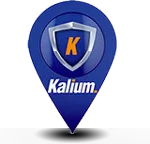49 CFR Hazmat Transportation Training
This training aims to understand the difference between Transport of Dangerous Goods (TDG) regulations and 49 CFR. We teach the shipper to be autonomous in preparing all his shipments between Canada and the US by road.
We cover the following topics:
- Canada and US requirements differences
- Classification (9 hazard classes)
- Reported Quantity (RQ)
- Restrictions
- Special Provisions
- Marking and labelling
- Documentation
- Appropriate standardized containers
- Exemptions
- Packaging and shipping exercises
We privilege enjoyable learning with the help of games and didactic material. Each participant will receive a training booklet for future reference and a training certificate in accordance with Transport Canada standards.


Summary and objectives of the training
If you are sending dangerous goods by ground transport to the United States, this training is mandatory. If you question any of the following issues in the course of your work, TDG-Transborder training will allow you to be able to send compliant packages and avoid rejected and returned shipments.
- Are you familiar with U.S. regulations (CFR 49)?
- Do you know what is excluded from the reciprocity treaty?
- Do you know the differences between TDGR (Canada) and CFR 49 (U.S.)?
- Do you know the legal repercussions and dangers of a non-compliant shipment on both sides of the border?
Training outline
Module 1: Regulatory Context and Classification
Objective of the module: to be able to
- Link UN involvement in TDG
- Know everyone's responsibilities in both Canada and the United States
- Understand the structure of U.S. regulation.
- Understand the need for comprehensive classification.
1.1 Legal responsibilities of each TDG actor in Canada and the United States
1.1.1 The shipper and importer, the carrier and the handler
1.1.2 Offences and Penalties
1.2 U.S. regulations
1.2.1 CFR 49 Structure
1.2.2 Reciprocity
1.2.3 Table of Hazardous materials
1.3 Classification
1.3.1 Proof of classification
1.3.2 Differences between Canada and the United States
1.3.3 Definitions of classes 1 to 9
1.3.4 Lithium batteries (an introduction)
Module 2: Documentation
Objective of the module: to be able to
- Judge the conformity or not of a shipping document
- Analyze good practices for submitting a shipping document
- Apply the requirements of the standard to your own shipping documents.
- Know the specificities related to the United States.
2.1 Regulatory Requirements
2.2 U.S. Specific requirements
2.3 Proper presentation of the shipping description
2.4 Additional Information
Module 3: Safety Marks
Objective of the module: to be able to
- Judge the Compliance of Safety Marks on a Truck
- Judge the Compliance of Safety Marks on a Package
- Properly complete the marks and labelling of a package
3.1 Labels
3.2 Marking and labelling of a small container
3.3 Marking and labelling of a large means of containment
3.4 Regulatory use of placards in transport
3.5 Differences between Canada and the United States
Module 4: Packaging
Objective of the module: to be able to
- Recognize standardized packaging.
- Understand packing instructions.
- Choose the right packaging
4.1 Characteristics of standardized packaging
4.2 U.S. Packing Instructions
4.3 UN mark on packaging
Module 5: Loading and Loading
Objective of the module: to be able to
- Know U.S. loading and reporting requirements
5.1 Loading and segregation
5.2 Reporting Requirements in Canada and the United States
Module 6: Exemption and Training
Objective of the module: to be able to
- Properly apply limited quantity exemptions
- Identify situations that can benefit from exemptions
- Synthesize regulations in real situations
6.1 Training requirements in the United States and Canada
6.2 Exemption of combustible liquids
6.3 Exemption of limited quantities
6.4 Requirements for cross-border drivers
Frequently asked questions
What is the 49 CFR Hazmat Transportation Training?
The purpose of the 49 CFR cross-border training course is to familiarize participants with the U.S. 49 CFR regulations on the transportation of dangerous goods. During the training, emphasis will be placed on the differences between the Canadian Transport of Dangerous Goods (TDG) and 49 CFR. We teach shippers to be autonomous in preparing all their shipments between Canada and the United States by land.
Who should enroll in the Cross-Border 49 CFR training?
Any company shipping dangerous goods by land from Canada to the U.S. must train its employees on 49 CFR cross-border in order to comply with TDG and U.S. DOT requirements. This course is intended for all personnel involved in the preparation, handling and shipment of dangerous goods to the United States. For example, employees with the following functions will need to be trained: packaging, labeling, bill of lading, loading, transportation.
What topics are covered in the 49 CFR Hazmat Transportation Training?
Cross-border 49 CFR training is designed to ensure compliance with the U.S. regulations, and will also focus on the differences and reciprocity between the Canadian Transportation of Dangerous Goods Regulations (TDGR) and the U.S. 49 CFR. Topics covered include an introduction to 49 CFR, reciprocity, classification including the use of the Hazardous Materials Table (HMT), labeling, shipping documents, packaging, segregation, exemptions, special provisions and training requirements
How long is the Cross-Border 49 CFR training course?
The cross-border 49 CFR training course lasts 4 hours. It includes practical exercises for each of the modules covered, to ensure that learning is fully integrated. The training also concludes with a knowledge assessment to ensure that all participants will be able to handle, request transport or carry dangerous goods.
Is this training available online or only on-site?
Training is available either at your workplace or via videoconference. In both cases, a qualified instructor will give the course and be on hand to answer any questions.
Will I receive a certificate upon completing the training?
Yes, you will receive a certificate containing the following information: the name and address of the employer's establishment, the employee's name, the expiry date of the training certificate and the aspects of handling, transport request or transport of dangerous goods for which the employee has received training.
How often do I need to renew my 49 CFR certification?
The training certificate expires 36 months after issue for road vehicle transport. It's important to note that the certificate is not transferable from one company to another, so if you change jobs, you'll have to take the training again with your new employer, even if the training is less than 3 years old, since the certificate must be signed by the employer.
Are there any prerequisites for enrolling in this course?
Since 49 CFR cross-border training emphasizes the differences and reciprocity with the Canadian Transportation of Dangerous Goods Regulations (TDGR), participants must have received TDG training beforehand.
What are the legal consequences of non-compliant shipments?
Failing to meet U.S. DOT (49 CFR) and Canadian TDG requirements for hazardous-materials shipments can trigger a spectrum of legal actions, from hefty civil fines to criminal prosecutions and operational injunctions. These consequences are designed to deter violations, protect public safety, and safeguard the environment from the inherent risks associated with these substances. Here's a breakdown of typical legal repercussions: substantial fines and penalties (in the thousands of dollars); criminal prosecutions and imprisonment; shipments delays, refusal and seizure; revocation or suspensions of permits and certificates; and compliance orders and corrective actions.
How can I register for the Cross-Border 49 CFR Hazmat Transportation Training?
You can contact us through our "Contact an expert!" boxes on the various pages of our website, or by calling 450 906-6999.

Design, programming and hosting by VisionW3.com


